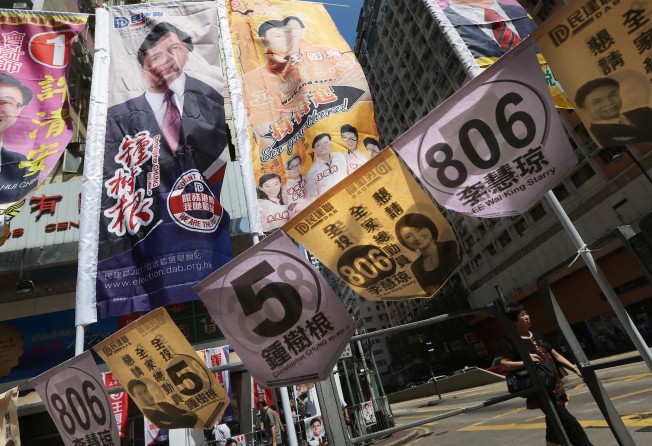
How a simple change could keep fringe candidates out of Hong Kong’s legislature, and ease political tensions
Gary Cheung says the ‘largest-remaining’ method, which allocates seats in our election system, needs revamping to avoid an increasingly debilitating division in the Legislative Council

In his 1970 best-selling book, Future Shock, American futurist Alvin Toffler argued that our problem in the future may not be the lack of choice but rather one of “having too many choices”. This is certainly the case for Hong Kong voters in September’s Legislative Council election.
Demosisto, a new youth-led party, plans to field two lists of candidates while a coalition of six post-Occupy groups is also considering fielding four lists in all geographical constituencies except New Territories East. Then there are six localists – including Edward Leung Tin-kei, who clinched 15.4 per cent of the vote in the New Territories East by-election in February – who plan to vie for seats.
There were a record 67 lists of candidates scrambling for 35 directly elected seats in the 2012 election. That record is almost certain to be broken this year.
In 1997, the Preparatory Committee, the Beijing-appointed body which oversaw Hong Kong’s handover, ruled out the single-seat, single-vote system under which the Democratic Party won 12 out of 20 directly elected seats in the 1995 Legco election.
The “first past the post” system was replaced by the proportional representation system. A candidate’s chance of winning a seat is based on a “quota” – obtained by dividing the number of valid votes cast for that constituency by the number of available seats. For example, a party which received 36,000 votes will get one seat straight away if the quota is 30,000. The top candidate on its list will have won.
The remaining seats are then allocated according to the “largest remainder method”. Parties are ranked according to their remaining votes (6,000 for the party cited in the example above). The seats will go to the parties with the highest number of remaining votes.
This system makes it difficult for more than one candidate from a list to win, particularly one from a major party. Thus, like-minded candidates are tempted to run on separate slates to maximise their chances of winning.

While the current system succeeds in preventing a monopoly of seats for the major parties, it has produced a fragmented legislature and nurtured radical voices. Having a small but fervent support base is enough to win a seat, and a party has little incentive to appeal to mainstream public opinion. Worse, the system discourages parties from crossing the political aisle to win over voters outside its pool of hardcore supporters. It is very likely that a candidate will win a seat in New Territories West or New Territories East in September, where there are nine seats up for grabs in each, with a vote share of below 5 per cent.
Are political groups willing to step outside their comfort zone?
It’s time to review the current electoral system. Even if it is politically impractical to abolish the proportional representation system, we should improve it.
One option is to replace the largest-remainder method with the D’Hondt method adopted in many European countries.
Under this system, the number of votes taken by each list are divided first by 1, then 2, then 3, up to the number of seats available. If there are nine seats up for grabs, each party’s votes will be divided by 1, 2, 3, 4, 5, 6, 7, 8, and 9. The nine highest entries will win the seats.
This system increases the winning chances of the second-placed candidate in a list. In the 2012 election, none of the 67 slates in direct elections was able to win two seats. If this method had been in place, four lists would have won two seats in 2012, and one list would have won three seats, thus helping to mitigate the fragmentation of the legislature.
But the key question is: are political groups, which benefit from the current system in varying degrees, willing to step outside their comfort zone?
Gary Cheung is the Post’s political editor